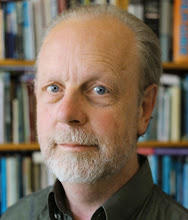I have started a blog devoted to thoughts, research and links on chronographics.
It is at http://chronographics.blogspot.com/
The first two posts introduce the subject and provide links to material about the timeline of Jacques Barbeu Du Bourg.
Monday, 31 August 2009
Princeton and Basingstoke?!
Princeton is architecturally stunning, principally for its 19th century gothic buildings on an almost industrial scale. There are innumerable walkways between the buildings and I spent an hour just wandering about and gazing.
John Witherspoon (1723-1794) was the only college principal to sign the Declaration of Independence.
Newton, Locke and Hume, key Enlightenment figures, depicted as inspiration for Witherspoon. What is the unnamed volume? It's impossible to see its name from the other side either.
Rather improbably, the statue of Witherspoon was cast in 2001 in Basingstoke, one of the ugliest towns in England.
iARTA at University of North Texas
iARTA, the Initiative for Advanced Research in Technology and the Arts, is a project by University of North Texas in Denton TX to bring art, design and music together with computing science and engineering in a university research cluster. Five visitors discussed with an internal team from the university how this could best be brought about.
The other participants were:
Chris Csikszentmihályi, Director of the MIT Media Lab's Computing Culture group, which works to create unique media technologies for cultural applications. He also directs the MIT Center for Future Civic Media, which develops new technologies and techniques to strengthen geographic communities.
Alain Depocas, Head of Research and Documentation Centre, The Daniel Langlois Foundation for Art, Science and Technology, Montreal, Quebec. Alain’s work at the Langlois Foundation focuses on the documentation and preservation of technology-based artworks and practices and on Web dissemination.
Dick Rijken, Director of STEIM in Amsterdam. In addition, he is the chair of an official EU workgroup on the creative and cultural industries, which focuses on national and European policies, and he is a professor at The Hague University of Applied Sciences, where he researches innovation in the traditional culture sector.
Mark Tribe at the Center for Culture and Media, Brown University, is a founder of Rhizome.org and serves as a Board Member for ISEA.
iARTA site
The other participants were:
Chris Csikszentmihályi, Director of the MIT Media Lab's Computing Culture group, which works to create unique media technologies for cultural applications. He also directs the MIT Center for Future Civic Media, which develops new technologies and techniques to strengthen geographic communities.
Dick Rijken, Stephen Boyd Davis, Alain Depocas, Chris Csikszentmihályi, Mark Tribe
Alain Depocas, Head of Research and Documentation Centre, The Daniel Langlois Foundation for Art, Science and Technology, Montreal, Quebec. Alain’s work at the Langlois Foundation focuses on the documentation and preservation of technology-based artworks and practices and on Web dissemination.
Dick Rijken, Director of STEIM in Amsterdam. In addition, he is the chair of an official EU workgroup on the creative and cultural industries, which focuses on national and European policies, and he is a professor at The Hague University of Applied Sciences, where he researches innovation in the traditional culture sector.
Mark Tribe at the Center for Culture and Media, Brown University, is a founder of Rhizome.org and serves as a Board Member for ISEA.
David Bithell, one of the leaders of the iARTA initiative
iARTA site
Sunday, 30 August 2009
Chronographics at Princeton
I was lucky enough to be in the States last week with enough time to go to the Rare Books collection at the library of Princeton. They have a very rare example of an early timeline - in fact it may be unique. It was created in 1753 by a Frenchman, Jacques Barbeu Du Bourg. I'm very grateful to Stephen Ferguson, curator of Rare Books, and other staff who helped me at the Library.
The timeline is special for two reasons. It may be the first to use a constant numerical scale for an entire historical period - and that's a lot, because it starts with the beginning of time (God, Adam etc.) and extends right through to Barbeu Du Bourg's own day. And it is interactive - slightly. Du Bourg's timeline is built into a very simple wooden machine with two crank handles so that you can move time back and forth.
I hope to organise material about this and related topics in a Chronographics blog, but for now here is a link to my translation of Diderot's article* from the Enyclopedie which describes the machine.
* Diderot, Denis. "Chronological (machine)." The Encyclopedia of Diderot & d'Alembert Collaborative Translation Project. Ann Arbor: Scholarly Publishing Office of the University of Michigan Library, 2009. Trans. of "Chronologique (machine.)," Encyclopédie ou Dictionnaire raisonné des sciences, des arts et des métiers, vol. 3. Paris, 1753. http://hdl.handle.net/2027/spo.did2222.0001.081 (accessed 14 August 2009).
Outside the Firestone Library at Princeton, August 2009
The timeline is special for two reasons. It may be the first to use a constant numerical scale for an entire historical period - and that's a lot, because it starts with the beginning of time (God, Adam etc.) and extends right through to Barbeu Du Bourg's own day. And it is interactive - slightly. Du Bourg's timeline is built into a very simple wooden machine with two crank handles so that you can move time back and forth.
I hope to organise material about this and related topics in a Chronographics blog, but for now here is a link to my translation of Diderot's article* from the Enyclopedie which describes the machine.
* Diderot, Denis. "Chronological (machine)." The Encyclopedia of Diderot & d'Alembert Collaborative Translation Project. Ann Arbor: Scholarly Publishing Office of the University of Michigan Library, 2009. Trans. of "Chronologique (machine.)," Encyclopédie ou Dictionnaire raisonné des sciences, des arts et des métiers, vol. 3. Paris, 1753. http://hdl.handle.net/2027/spo.did2222.0001.081 (accessed 14 August 2009).
Subscribe to:
Posts (Atom)









